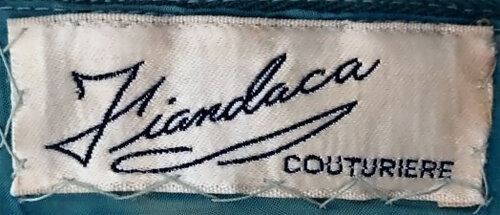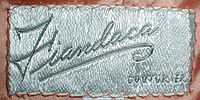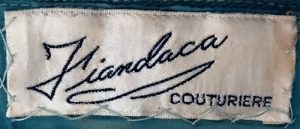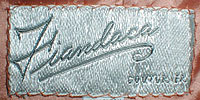Alfred Fiandaca (1940-2013) was the third generation clothing designer from his Italian-American family, having worked alongside his father as a child. He moved to New York City when he was seventeen, where he studied at the Fashion Institute of Technology and the now former Traphagen School of Design.
His career started in 1960, when he moved back to East Boston. He soon had a big break when the wife of then newly-elected Massachusetts Governor, John Volpe, asked him to design a new suit and gown for the inauguration.
His early 1960s designs were “wife dressing,” designed to highlight the wealth and prestige of a woman’s husband, and political wife dressing became a Fiandaca specialty. Fiandaca went on to design for more presidential First Ladies and would-be First Ladies than any other designer, including Lady Bird Johnson, Nancy Reagan, Joan Kennedy, Kitty Dukakis, and Muriel Humphrey.
To supplement his couture collection, Fiandaca introduced a “boutique line” in 1967, with a design philosophy (and price) geared toward the younger set.
In the 1970s, Fiandaca dressed Louise Fletcher when she won the Academy Award for Best Actress in One Flew Over the Cuckoo’s Nest. He has had a long list of celebrity clients, including Raquel Welch, Audrey Hepburn, Connie Francis, Lauren Bacall, Jayne and Audrey Meadows, Nancy Sinatra, Julie Andrews, Dionne Warwick, Shelley Winters, Joan Rivers, Stephanie Mills, Cher, Oprah Winfrey, Janet Langhart Cohen, Natalie Jacobson, and Susan Lucci. His clients also include many in the social elite.
In 1985 Fiandaca designed a dress for Joan Collins to wear on the television show Dynasty. The suit dress cost $3,200, the most expensive outfit ever commissioned for television at that time. It appeared for just 3 ½ minutes!
In the 1980s Fiandaca became increasingly known for “fantasy night looks,” extravagantly beaded, sequined, layered and otherwise opulent styles. To this day he is revered for his evening and wedding gowns. In 1996, after years of mainly wholesale sales to illustrious department stores, Fiandaca opened his first retail store in Palm Beach, and a second a year later in New York.
See also: Leondaca
Written by denisebrain



